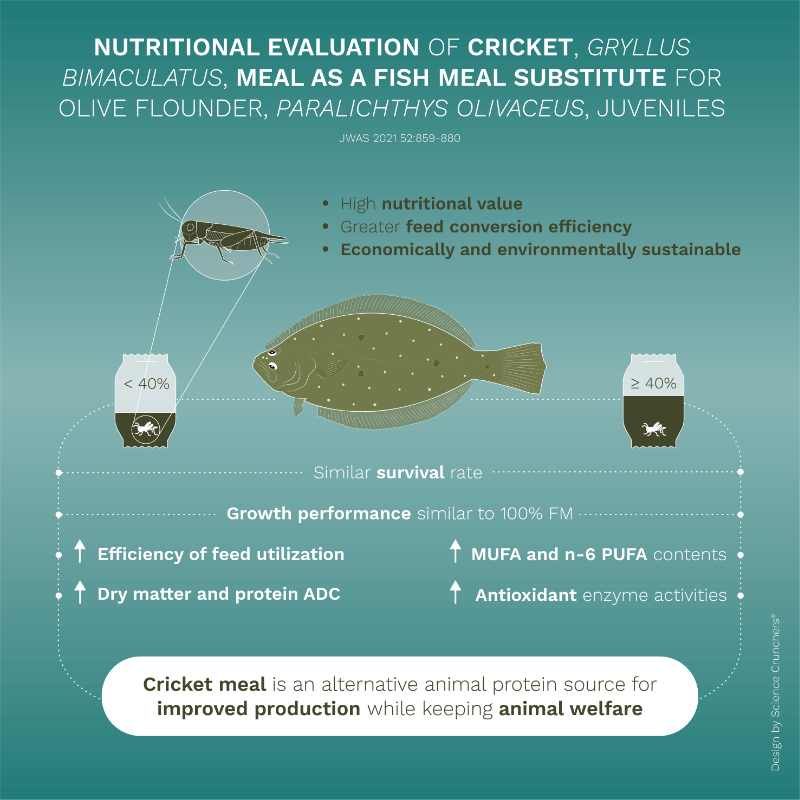The many challenges of disease management in aquaculture
Regardless of the aquatic species an aquaculture venture produces, there are significant risks to su...

Olive Flounder, Paralichthys olivaceus, is one of the most successfully cultured flatfish species worldwide. This marine species demands high levels of easily digested protein and current production methods still rely on large amounts of fishmeal or trash fish inclusion in formulated and freshly mixed diets respectively. In the latest featured article by Seong-Mok Jeong and co-authors investigated increasing inclusion of meal from cricket, Gryllus bimaculatus, to replace fishmeal in Olive flounder diets. Results showed up to 40% fishmeal replacement without any growth reduction. Antioxidant enzyme activity increased with cricket meal inclusion up to 60% but fatty acid profiles were impacted by high inclusion levels. Results indicate cricket meal is a readily available and viable protein source for partial fishmeal replacement for this valuable finfish species.
Golden shiners, Notemigonus crysoleucas, are the most important baitfish species in US aquaculture. Kaimal and Kelly in their latest study compared split-pond and traditional earthen pond systems to determine the effect of pond type on available zooplankton. While it was proposed that the split pond systems may offer zooplankton refuges in the waste treatment unit, in fact the traditional pond systems had significantly higher zooplankton densities. The most significant impact on fish performance parameters was shown to be the lack of additional feeding in split pond systems, while the largest impact on survival remained the well-known external impacts of bird and snake depredation.
Sustainable sources of omega-3 (n-3) long-chain polyunsaturated fatty acids (LC-PUFA) are essential to fed aquaculture development and growth. Oils from plants such as Camelina sativa, genetically engineered to produce eicosapentaenoic acid (EPA) and docosahexaenoic acid (DHA), may offer an alternative to fish oil. Osmond et al. fed low (12.5 g/kg) and high (130 g/kg) transgenic Camelina sativa oil diets, and a fish oil control diet to juvenile rainbow trout. Results clearly show that Camelina sativa oil is nutritionally suitable for trout. All trout growth performance data were the same across all treatments, however the low Camelina sativa oil diet had lower fillet EPA content. Stable isotope analysis confirmed DHA storage in tissue from different dietary sources. The high Camelina sativa oil diet produced firmer and more intensely coloured trout fillets.
Isolating suitable bacterial strains from biofloc promises the opportunity of finding useful probiotic strains for removal of nitrogenous wastes. Dou et al. isolated and cultured two facultative anaerobic strains Vibrio sp. strain AB15 and Pseudomonas fluorescens strain NB14 from shrimp ponds and investigated their removal efficiencies of ammonia and nitrite. At optimal conditions the strains both removed upwards of 90% of both wastes. The isolates were harmless to shrimp and inhibited common pathogenic Vibrio species at concentrations of 105–108 CFU/mL. These strains have significant potential for use as probiotics in shrimp ponds to maintain biosecurity and water quality under high nitrogen loads.